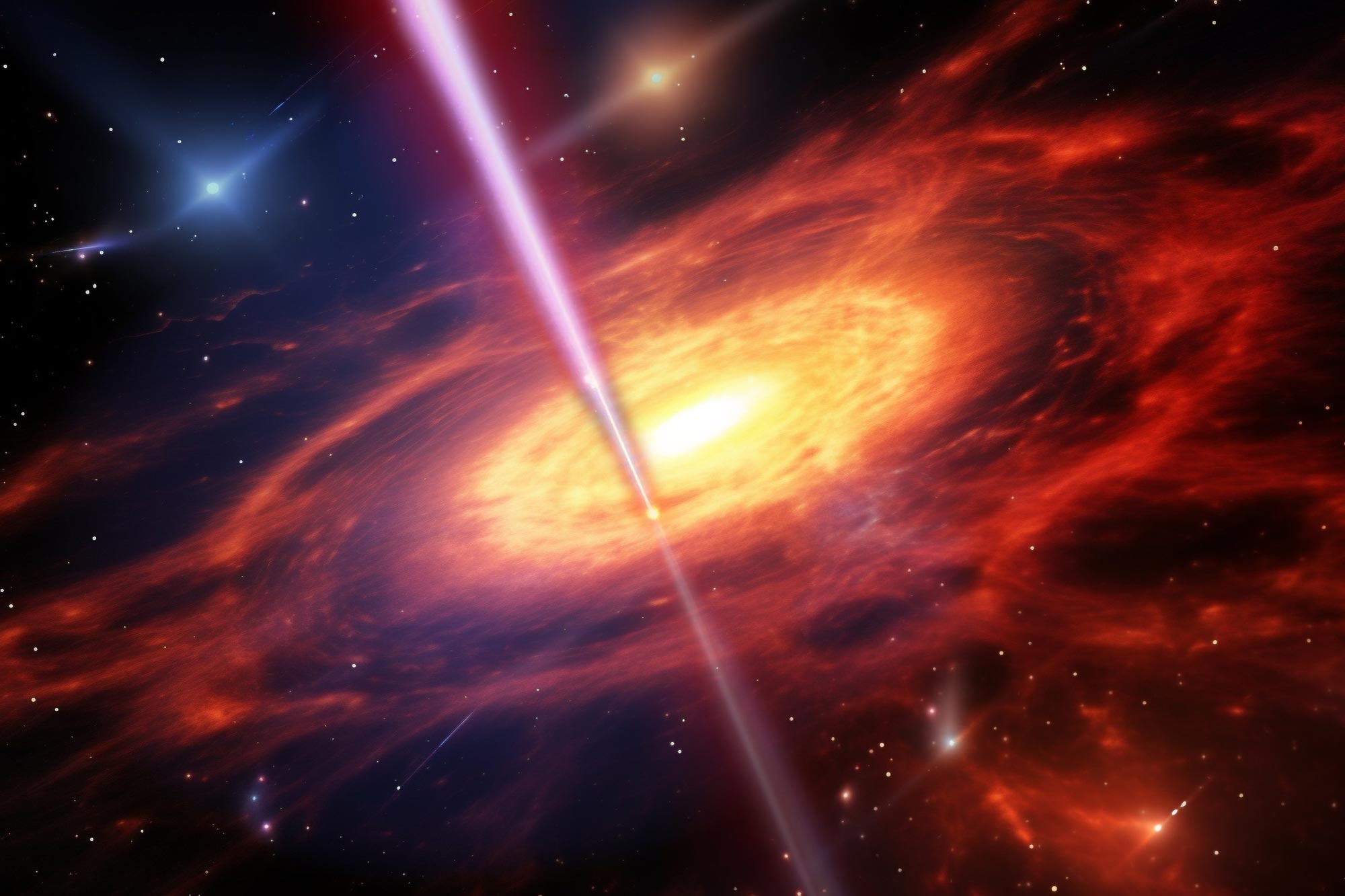Un equipo internacional de astrónomos ha detectado un largo estallido de rayos gamma en una galaxia antigua, probablemente causado por la fusión de dos estrellas de neutrones separadas, lo que desafía la comprensión tradicional de las causas de tales explosiones. El equipo usó múltiples telescopios para analizar el estallido de 2019 y, aunque se consideraron otras posibles causas, esperan que las observaciones futuras aclaren los orígenes de este fenómeno.
Por primera vez, un equipo internacional de astrónomos ha observado un largo estallido de rayos gamma cerca del centro de una antigua galaxia. Esto es especial porque este tipo de estallidos de rayos gamma generalmente ocurren cuando las estrellas masivas colapsan o las estrellas de neutrones se orbitan entre sí durante mucho tiempo, y no hay tales estrellas en el centro de las galaxias antiguas. El equipo, dirigido por Andrew Levan (Universidad de Radboud), publicó sus hallazgos en astronomía natural.
El consenso general fue que los estallidos de rayos gamma de al menos unos segundos de duración solo pueden ocurrir cuando una estrella muy pesada colapsa en una supernova al final de su vida. En 2022, se reveló un posible segundo desencadenante de estallidos largos de rayos gamma cuando dos estrellas masivas, que se habían orbitado entre sí durante toda su vida, eventualmente se convirtieron en estrellas de neutrones y chocaron con kilonovas. Ahora, en el año 2023, parece que los estallidos largos de rayos gamma podrían ocurrir de una tercera manera.
«Nuestros datos indican que este es un caso de fusión de dos estrellas de neutrones separadas. Sospechamos que las estrellas de neutrones fueron empujadas juntas por la gravedad de muchas estrellas circundantes en el centro de la galaxia», dice el investigador principal Andrew Levan (Universidad de Radboud). ).
El equipo de investigadores estudió los efectos de un estallido de rayos gamma detectado por el Observatorio Neil Gehrels Swift el 19 de octubre de 2019. Lo hicieron utilizando el telescopio Gemini Sur en Chile, el Telescopio Óptico del Norte en las Islas Canarias en La Palma y el[{» attribute=»»>Hubble Space Telescope.
Their observations show that the burst was caused near the center of an ancient galaxy. This immediately provides two arguments pointing to the merging of two sources.
The first argument is that there are almost no heavy stars in ancient galaxies that could collapse into supernovae, because heavy stars typically occur in young galaxies. In addition, supernovae emit bright optical light, which was not observed in this case.
A second argument is that the center of galaxies are busy places. There are hundreds of thousands of normal stars, white dwarfs, neutron stars, black holes, and dust clouds all orbiting a supermassive black hole. Altogether, this represents over 10 million stars and objects crammed into a space of a few light-years across. “That is an area comparable to the distance between our sun and the next star,” Levan explains. “So the probability of a collision in the center of a galaxy is much higher than, say, at the outskirts, where we are.”
The researchers are still leaving room for alternative explanations. The prolonged gamma-ray burst could also result from the collision of compact objects other than neutron stars, for example, black holes or white dwarfs. In the future, the researchers hope to be able to observe long gamma-ray bursts at the same time as gravitational waves. This would help them to make more definitive statements about the origin of the radiation.
For more on this discovery:
Reference: “A long-duration gamma-ray burst of dynamical origin from the nucleus of an ancient galaxy” by Andrew J. Levan, Daniele B. Malesani, Benjamin P. Gompertz, Anya E. Nugent, Matt Nicholl, Samantha R. Oates, Daniel A. Perley, Jillian Rastinejad, Brian D. Metzger, Steve Schulze, Elizabeth R. Stanway, Anne Inkenhaag, Tayyaba Zafar, J. Feliciano Agüí Fernández, Ashley A. Chrimes, Kornpob Bhirombhakdi, Antonio de Ugarte Postigo, Wen-fai Fong, Andrew S. Fruchter, Giacomo Fragione, Johan P. U. Fynbo, Nicola Gaspari, Kasper E. Heintz, Jens Hjorth, Pall Jakobsson, Peter G. Jonker, Gavin P. Lamb, Ilya Mandel, Soheb Mandhai, Maria E. Ravasio, Jesper Sollerman and Nial R. Tanvir, 22 June 2023, Nature Astronomy.
DOI: 10.1038/s41550-023-01998-8

«Organizador aficionado. Aspirante a evangelista de la cerveza. Fanático de la web en general. Ninja certificado de Internet. Lector ávido».







More Stories
El experimento de laboratorio más largo del mundo ahora se transmite en vivo
El avión espacial First Dream Chaser necesita un poco más de trabajo cuando llegue al lugar de lanzamiento
SpaceX realiza con éxito un lanzamiento estático de su vehículo Starship